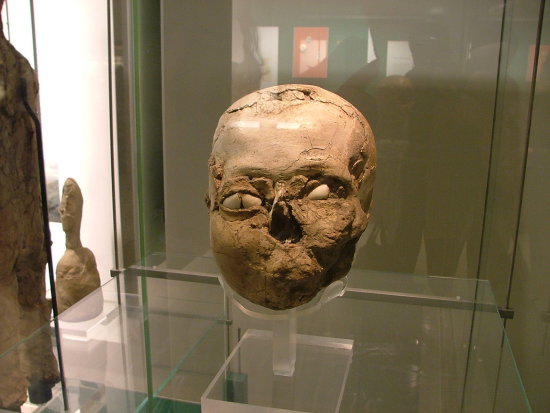Facts About Plastered human skulls
The plastered human skulls, dating back to 9,000-6,000 BC, are captivating artifacts from the ancient Levant during the Pre-Pottery Neolithic B period. These skulls not only represent some of the oldest forms of art in the Middle East but also reflect the meticulous care prehistoric peoples took in burying their ancestors beneath their homes. They are regarded as early examples of sculptural portraiture in art history.
The discovery of these skulls has been significant, unearthed by archaeologists such as John Garstang in Jericho during the 1930s and Kathleen Kenyon in the 1950s. Today, these remarkable artifacts are displayed in museums around the world, including the British Museum, the Ashmolean Museum, the Cambridge Museum of Archaeology and Anthropology, the Royal Ontario Museum, the Nicholson Museum, and the Jordan Archaeological Museum. Other notable excavation sites include ‘Ain Ghazal and Amman in Jordan and Tell Ramad in Syria. While most of the skulls belonged to adult males, some were from women and children.
The archaeological importance of these plastered skulls lies in their depiction of early burial practices in the southern Levant during the Neolithic era. Typically, the deceased were buried under the floors of their homes. In some cases, their skulls were removed, filled with plaster, and painted. To render the faces more lifelike, shells were often used for the eyes, and paint was applied to depict facial features, hair, and even mustaches. Scholars suggest this practice might indicate early forms of ancestor worship or head hunting, with some experts speculating that the skulls could have been seen as trophies. These plastered skulls offer a unique glimpse into the earliest forms of art and religious practices in the ancient Near East.

 United States
United States